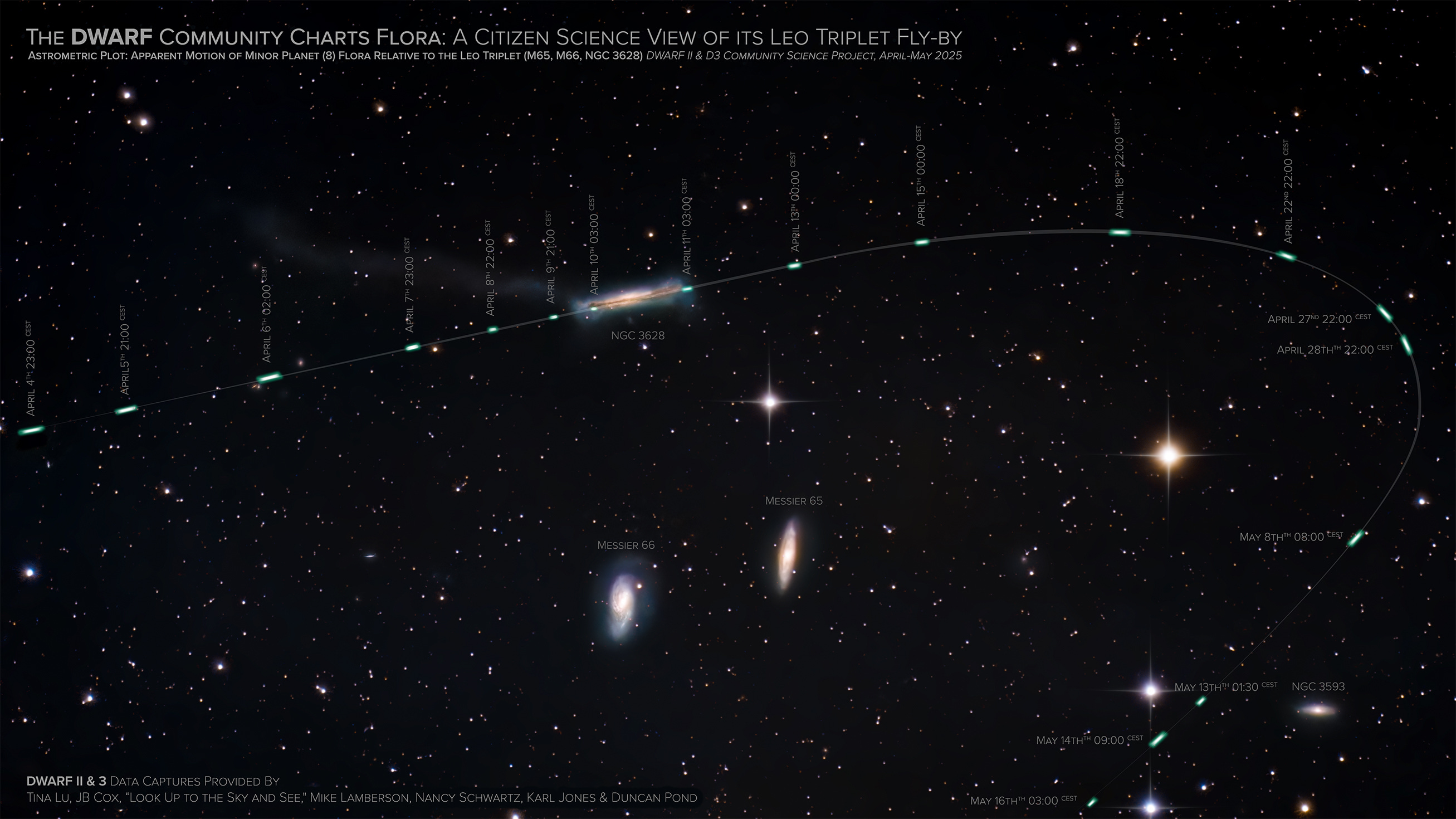DwarfVision Community Maps Asteroid Flora's Celestial Dance Across Leo Triplet
SCHMERIKON, SWITZERLAND – May 17, 2025

The DwarfVision "Asteroid (8) Flora Tracking Project," a special segment of our ongoing Galaxy Season Challenge, has seen an inspiring surge in community participation and data contribution. Thanks to the dedicated efforts of DWARF II and D3 smart scope users, we are piecing together an increasingly detailed picture of Flora's journey as it passed the iconic Leo Triplet of galaxies earlier this spring.
New Observations Enhance Flora's Path
Since our last update, several more keen-eyed astrophotographers have submitted their valuable image data, allowing us to refine the plotted path of Flora. We greatly thank our latest contributors: "Look Up to the Sky and See," Mike Lamberson, Nancy Schwartz, Antoine Weis, and Karl Jones. Their observations join those previously submitted by Tina Lu and JB Cox, all integrated with Duncan Pond's (DwarfVision) captures. This collaborative effort embodies citizen science's spirit, demonstrating how multiple observers using accessible technology like the DWARF scopes can contribute to tracking solar system bodies. Each submitted image acts as a crucial data point, helping to precisely map the asteroid's apparent movement against the distant stellar background.

Unravelling the Arc: Why Does Flora's Path Curve?
Note the distinct curve in Flora's apparent path across the Leo Triplet, as illustrated in our composite image. This isn't because Flora is veering wildly off course, but rather due to a fascinating interplay of celestial mechanics:
Earth's Own Motion: Our planet is constantly moving in its orbit around the Sun. As our vantage point shifts, it creates a parallax effect, causing relatively nearby objects like asteroids to appear to shift their position against the backdrop of far more distant stars and galaxies.
Flora's Orbital Journey: Flora follows its elliptical orbit around the Sun within the central asteroid belt.
The Retrograde Illusion: For an asteroid like Flora, the most significant contributor to such a pronounced curve, mainly when observed over several weeks near its opposition (closest approach to Earth), is often "apparent retrograde motion." As Earth, on its faster inner orbit, "overtakes" Flora, the asteroid appears to slow down its eastward (prograde) motion against the stars, then stop, move westward (retrograde) for a period, before stopping again and resuming its eastward journey. From our perspective, this creates a loop or an S-curve in its apparent path.
This celestial dance provides an excellent real-time demonstration of the orbital dynamics in our solar system, all set against the majestic backdrop of the Leo Triplet – Target #4 in our Galaxy Season Challenge.

The Bigger Picture: Galaxy Season Challenge Continues
The Flora tracking project has been an exciting addition to our broader Galaxy Season Challenge, where we encourage DWARF scope users to capture as many stunning spring galaxies as possible. The Leo Triplet (M65, M66, and NGC 3628) serves as a magnificent stage for events like Flora's pass, reminding us of the vast distances involved—Flora is mere light-minutes away, while the Triplet's light has travelled some 35 million years to reach us.
We are thrilled by the community's response and the quality of the data being shared. Visit the DwarfVision website to see the full composite image, learn more about the Leo Triplet, and check the latest Galaxy Season Challenge leaderboard.
Stay tuned for more updates, and don't forget to tag your challenge images on Facebook with #DwarfVisionGalaxyChallenge






Appreciate the great work and collaboration by the DF community in this shared project